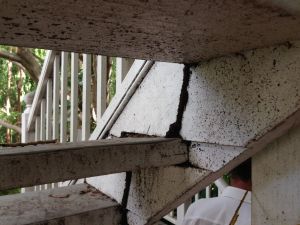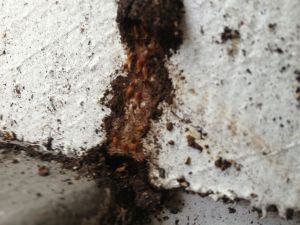What is termite management?
Termite Management refers to any system used to control, act against, eradicate or otherwise modify the impact of subterranean termites on buildings, structures or materials. Termites cause more damage to Australian houses than fire, floods and storms combined – damage that is not covered by household insurance. The Building Regulations require all new buildings, including alterations and extensions, built within designated termite- infested areas, to have some form of management against termite attack. The Building Code of Australia provides two alternative strategies for termite management: the use of termite resistant materials for the primary structural elements, or the installation of a chemical or physical barrier system
What do termites do?
When forming a new colony, termite alates (the sexually reproductive stage of the termite lifecycle) are known to fly around in great numbers, particularly in the changing warmer months. This occurs annually. Once favourable conditions are found to begin a new colony their wings drop off and they mate, rarely coming out into the open. At this next stage of their lifecycle body colour becomes paler and there is a need to avoid light and maintain an optimum temperature and humidity for working and living. They sometimes also conceal themselves within mud-like tubes or galleries. Concealed locations within your home carry a greater potential for undetected structural damage. Often termites are found to destroy timber internally, leaving only a wafer-thin layer to protect themselves from the outside environment. There is no predictable pattern or height restriction to their infestation sites and their tubes or galleries have been known to travel up walls with termite infestations found in roofs and even high-rise construction.
How do I identify termite activity?
Termite activity is often difficult to detect as it usually occurs in concealed areas. It is recommended to conduct regular visual inspections in and around you home to identify any potential termite activity. If you suspect any termite activity you should engage an expert to conduct a full inspection. What to look for: • Weak timber that breaks easily revealing wafer thin layers Skirting boards are often the first point of damage. • Look for changes in corner facias under gutters as termites are attracted to damp or moist areas. • Mud-like tubes or material around external footings/brickwork, or internal fittings like service pipes and electrical plugs • Cracks/holes in timber or plaster with a fine dust residue. • Check surrounding trees, timber in ground contact and garden beds (up to a 50 metres radius around the home) to identify if a colony is active nearby.
What should I do if I find termites?
Should you uncover termites, try to put things back as they were. Surface spraying and ripping out floorboards, architraves or other building material may kill a few termites in those timbers but in doing so you have lessened the chances of an expert effectively treating the main nest. The termites will re-group and probably may choose to attack another section of the house structure. Termites can regularly re-infest with multiple nests attached to the colony at a radius of 50 plus metres. This, together with the fact that a termite colony can consist of over two and a half million individuals, means that if you do discover an infestation, it is prudent and civically responsible to immediately notify your neighbours.
How can termites be managed?
If you are building a new home or major extension, you can choose to use termite resistant primary structures like concrete slabs, steel stumps, termite resistant timber and steel frames. By doing this you limit the potential for termite damage to secondary and superficial elements which are easier to detect and cheaper to replace. Alternatively you can specify a physical or chemical barrier to be installed during construction, or a chemical barrier for an existing building.
Termite barriers are designed to stop concealed access and force termites into the open where their mud tunnels can be more easily detected. Depending on construction, an approved pest controller can assist with the best type of treatment, which, besides chemical spray options, may include baiting systems and/or reticulation systems (Shelter’s preferred method where suitable). All barriers will require ongoing inspections, some with maintenance and/or chemical replenishment. You should always be fully informed about ongoing maintenance requirements and the best pre or post construction options for your application.



